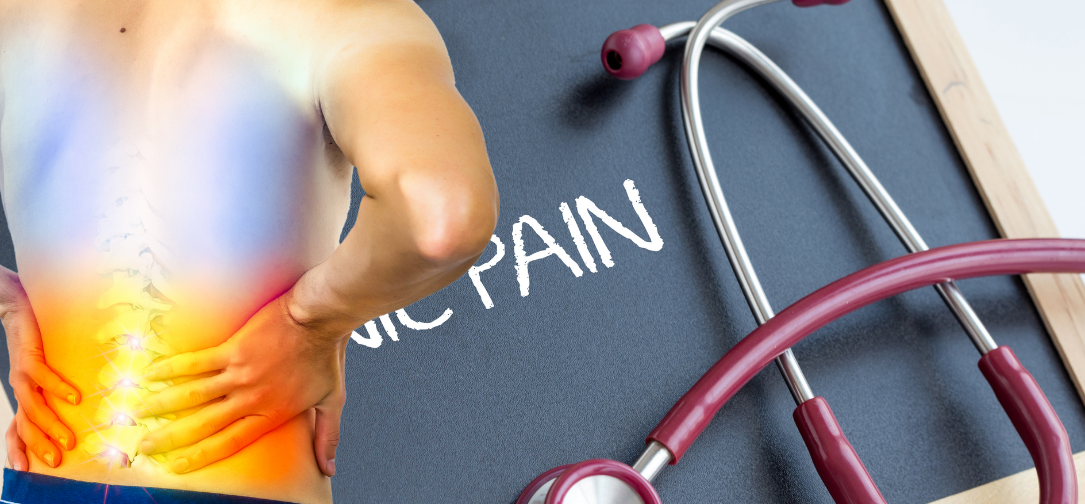Pharmaceuticals
Chronic Pain Management: Exploring Non-Pharmaceutical Options

Chronic pain, characterized by pain lasting more than three to six months, affects millions of people worldwide and is a significant public health issue. Unlike acute pain, which serves as a warning signal for the body and typically subsides with treatment, chronic pain can persist long after the initial injury or illness has resolved. This persistent pain not only impacts physical health but also has profound effects on mental well-being, social interactions, and overall quality of life. Traditional approaches to chronic pain management have heavily relied on pharmaceutical interventions, including opioids and non-steroidal anti-inflammatory drugs (NSAIDs). However, the limitations and risks associated with long-term pharmaceutical use, such as dependency, tolerance, and adverse side effects, have driven the search for non-pharmaceutical options for managing chronic pain. This article explores a range of non-pharmaceutical strategies that have shown promise in alleviating chronic pain and improving patients’ quality of life.
Understanding Chronic Pain: A Complex and Multifaceted Condition
Chronic pain is not merely a symptom; it is a complex and multifaceted condition that involves biological, psychological, and social factors. The International Association for the Study of Pain (IASP) defines pain as an unpleasant sensory and emotional experience associated with actual or potential tissue damage. In the context of chronic pain, this definition becomes more nuanced, as the pain experience may no longer be directly related to tissue damage or may continue long after tissue healing.
Chronic pain can be broadly categorized into three types:
1) Nociceptive Pain: This type of pain arises from damage or inflammation of tissues other than the nerves. It is typically associated with conditions such as arthritis, fibromyalgia, and back pain.
2) Neuropathic Pain: This pain results from damage to or dysfunction of the nervous system. It is often described as burning, shooting, or tingling and is commonly seen in conditions like diabetic neuropathy, multiple sclerosis, and post-herpetic neuralgia.
3) Centralized Pain: Also known as central sensitization, this type of pain arises from an abnormal processing of pain signals in the central nervous system. Conditions such as fibromyalgia and some cases of chronic lower back pain fall into this category.
Effective management of chronic pain requires a comprehensive and individualized approach that considers the underlying cause, the type of pain, and the patient’s psychological, emotional, and social context.
The Limitations of Pharmaceutical Interventions
Pharmaceutical interventions for chronic pain, particularly opioids and NSAIDs, have been the cornerstone of pain management for many years. While these medications can provide significant relief, their limitations and risks have become increasingly apparent:
- Opioid Dependency and Tolerance: Opioids, such as morphine and oxycodone, are powerful pain relievers but carry a high risk of dependency, tolerance, and overdose. Prolonged use can lead to a need for higher doses to achieve the same level of pain relief, increasing the risk of side effects and dependency.
- Adverse Side Effects of NSAIDs: NSAIDs, such as ibuprofen and naproxen, are commonly used to treat chronic pain but can cause gastrointestinal problems, cardiovascular issues, and kidney damage when used long-term.
- Limited Efficacy for Certain Pain Types: Some types of chronic pain, particularly neuropathic pain, respond poorly to traditional pharmaceutical treatments, necessitating the exploration of alternative options.
Given these challenges, there is a growing interest in non-pharmaceutical approaches that can complement or replace conventional medications, offering safer and potentially more effective strategies for chronic pain management.
Non-Pharmaceutical Options for Chronic Pain Management
Non-pharmaceutical options for chronic pain management encompass a wide range of modalities, including physical therapies, psychological interventions, complementary and alternative medicine (CAM), and lifestyle modifications. These approaches often work synergistically, targeting various aspects of the pain experience and providing a holistic approach to pain management.
1) Physical Therapies
Physical therapies play a vital role in managing chronic pain by improving mobility, reducing stiffness, and enhancing overall function. Key physical therapy modalities include:
- Physical Therapy and Exercise: A cornerstone of non-pharmaceutical pain management, physical therapy focuses on tailored exercises that strengthen muscles, improve flexibility, and promote joint health. Aerobic exercises, strength training, and stretching exercises can all help alleviate pain. Studies have shown that consistent physical activity can reduce pain severity and improve physical function in conditions like osteoarthritis, lower back pain, and fibromyalgia.
- Manual Therapy: Techniques such as massage, myofascial release, and spinal manipulation can help alleviate musculoskeletal pain by targeting soft tissues and improving circulation. Manual therapy has been found to be effective in treating conditions like tension headaches, neck pain, and back pain.
- Transcutaneous Electrical Nerve Stimulation (TENS): TENS is a non-invasive modality that uses low-voltage electrical currents to stimulate nerves and reduce pain perception. It has shown promise in managing neuropathic pain, such as diabetic neuropathy, and postoperative pain.
- Acupuncture: A key component of traditional Chinese medicine, acupuncture involves inserting thin needles into specific points on the body to balance the flow of energy (Qi) and stimulate natural pain-relief mechanisms. Clinical studies have demonstrated acupuncture’s effectiveness in treating chronic pain conditions like migraines, osteoarthritis, and fibromyalgia.
2) Psychological Interventions
Chronic pain is often accompanied by psychological distress, including anxiety, depression, and fear of movement (kinesiophobia). Psychological interventions address these issues, helping patients develop coping strategies and improve their pain management skills. Effective psychological interventions include:
- Cognitive Behavioral Therapy (CBT): CBT is a widely used psychological intervention for chronic pain that helps patients identify and change negative thought patterns and behaviors associated with pain. By reframing maladaptive thoughts and behaviors, patients can develop healthier coping mechanisms and reduce pain-related distress. Research has shown that CBT can significantly reduce pain intensity, improve mood, and enhance overall quality of life in patients with chronic pain.
- Mindfulness-Based Stress Reduction (MBSR): MBSR combines mindfulness meditation, body awareness, and yoga to help patients manage pain by cultivating a non-judgmental awareness of the present moment. By reducing the focus on pain and promoting relaxation, MBSR has been shown to reduce pain intensity and improve emotional well-being in conditions like fibromyalgia, chronic back pain, and rheumatoid arthritis.
- Acceptance and Commitment Therapy (ACT): ACT encourages patients to accept their pain and commit to value-based actions, rather than attempting to eliminate pain. By fostering psychological flexibility, ACT helps patients focus on meaningful life activities despite chronic pain, leading to improved emotional well-being and reduced pain interference.
- Biofeedback: Biofeedback is a technique that teaches patients to control physiological processes such as heart rate, muscle tension, and skin temperature. By gaining awareness and control over these processes, patients can reduce stress and pain perception. Biofeedback has shown effectiveness in managing conditions like migraines, tension headaches, and temporomandibular joint disorders (TMJ).
3) Complementary and Alternative Medicine (CAM)
Complementary and Alternative Medicine (CAM) encompasses a variety of non-conventional approaches to pain management. These therapies can be used alongside traditional treatments to enhance pain relief and overall well-being. Common CAM modalities include:
- Herbal and Nutritional Supplements: Certain herbs and nutritional supplements, such as turmeric, ginger, omega-3 fatty acids, and cannabidiol (CBD), have demonstrated anti-inflammatory and analgesic properties. For example, studies have shown that curcumin, the active compound in turmeric, may reduce pain and inflammation in conditions like osteoarthritis and rheumatoid arthritis. However, it is essential to consult with healthcare providers before using supplements, as they may interact with other medications or have side effects.
- Chiropractic Care: Chiropractic care involves spinal manipulation and other manual techniques to address musculoskeletal pain. Chiropractors aim to improve spinal alignment, reduce nerve irritation, and enhance overall function. Chiropractic care has shown benefits for conditions such as lower back pain, neck pain, and tension headaches.
- Mind-Body Therapies: Mind-body therapies, such as yoga, tai chi, and qigong, combine physical movement, meditation, and breath control to promote relaxation and pain relief. These practices have been found to improve pain, physical function, and mental health in conditions like fibromyalgia, osteoarthritis, and chronic lower back pain.
- Hypnotherapy: Hypnotherapy involves guiding individuals into a deep state of relaxation and heightened suggestibility, where they can explore and reframe pain perceptions. Research suggests that hypnotherapy can be effective in managing chronic pain, particularly when combined with other psychological interventions like CBT.
4) Lifestyle Modifications
Lifestyle factors, including diet, sleep, and stress management, play a critical role in chronic pain management. By making positive changes in these areas, individuals can reduce pain, improve function, and enhance overall well-being.
- Diet and Nutrition: An anti-inflammatory diet rich in fruits, vegetables, whole grains, lean proteins, and healthy fats can help reduce inflammation and pain. Avoiding processed foods, refined sugars, and trans fats is also crucial for managing chronic pain. For example, a Mediterranean diet, which emphasizes anti-inflammatory foods, has been associated with reduced pain in conditions like rheumatoid arthritis and osteoarthritis.
- Sleep Hygiene: Poor sleep quality and chronic pain often coexist in a vicious cycle, where pain disrupts sleep, and poor sleep exacerbates pain. Developing good sleep hygiene, such as maintaining a regular sleep schedule, creating a comfortable sleep environment, and avoiding stimulants before bedtime, can help improve sleep quality and reduce pain perception.
- Stress Management: Chronic stress can exacerbate pain by increasing muscle tension, inflammation, and sensitivity to pain. Effective stress management techniques, such as mindfulness meditation, deep breathing exercises, progressive muscle relaxation, and guided imagery, can help reduce stress and enhance pain management.
- Weight Management: Maintaining a healthy weight can significantly reduce pain in weight-bearing joints such as the knees, hips, and spine. Weight loss through a combination of diet and exercise can alleviate pain and improve overall function in conditions like osteoarthritis and degenerative disc disease.
Integrative Pain Management: A Holistic Approach
While each non-pharmaceutical approach has its benefits, chronic pain is best managed through an integrative and multidisciplinary approach. Integrative pain management combines multiple modalities to address the physical, psychological, and social aspects of chronic pain. This holistic approach involves a team of healthcare providers, including physicians, physical therapists, psychologists, dietitians, and complementary and alternative medicine practitioners, who work together to develop a personalized pain management plan tailored to the patient’s needs and preferences.
The benefits of integrative pain management include:
- Reduced Reliance on Medications: By incorporating non-pharmaceutical approaches, patients can often reduce their dependence on medications, minimizing the risk of side effects and complications.
- Improved Quality of Life: Integrative approaches focus on improving physical function, emotional well-being, and overall quality of life, rather than merely alleviating pain.
- Enhanced Patient Empowerment: Integrative pain management empowers patients to take an active role in their care, fostering a sense of control and self-efficacy.
- Long-Term Sustainability: Non-pharmaceutical interventions, such as exercise, mindfulness, and dietary changes, can be sustainable lifestyle changes that provide long-term benefits.
Conclusion
Chronic pain management is a complex and evolving field that requires a comprehensive, patient-centered approach. Non-pharmaceutical options offer a wide range of effective strategies for managing chronic pain without the risks associated with long-term medication use. From physical therapies and psychological interventions to complementary and alternative medicine and lifestyle modifications, these approaches provide valuable tools for alleviating pain, improving function, and enhancing overall quality of life. By embracing an integrative and multidisciplinary approach to pain management, healthcare providers can help patients achieve more sustainable and meaningful relief from chronic pain.









































